How to Properly Uninstall Microsoft Office for Mac
Still using Office for Mac 2011 on your Mac? Have no idea how to completely remove the older version before installing the latest one? If you want to uninstall Microsoft Office without any trace left, follow the correct steps in this removal guide.

About the app: Microsoft Office for Mac requires a one-time purchase, and includes the classic Word, Excel, PowerPoint and OneNote. According to Microsoft, the latest Office 2019 is changing to only support Apple’s three most recent versions of macOS (currently macOS 10.14, 10.13, and 10.12.), while the 2016 version can still run on macOS 10.11 and 10.10. If you’re on an unsupported version of macOS, your Office apps will still work but you would not receive any updates including security updates.
In this post, we will list two available ways to uninstall Microsoft Office for Mac.
Preparation: Prior to the standard uninstall, there is one thing you need to do. If the target app is running, make sure to first quite this app from the Dock. And then, you can activate Activity Monitor to deactivate associated process(es), like that:
- Run Activity Monitor from Applications/Utilities folder, Spotlight or Launchpad
- Locate and select the process related to any Office app, click on (X), and hit Quit
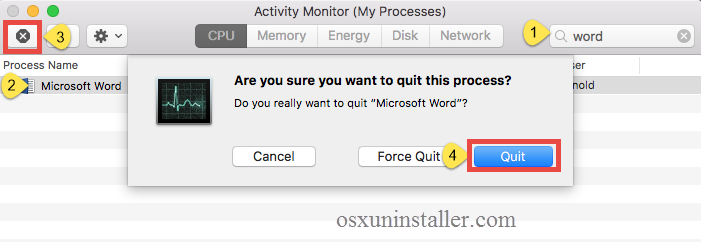
After that, you can either run a reputable remover to easily remove Microsoft Office, or carry out the manual removal by deleting all Office apps and their components.
Option 1: Take Simple Clicks to Uninstall Microsoft Office Apps
As said before, Office for Mac include several apps, and you will need to uninstall any of them one by one, which may take a little more time to repeat the same uninstall steps. If you want to get rid of Microsoft Office apps as quickly as possible, we suggest you to utilize a professional tool, like Osx Uninstaller, to handle the task.
Among many uninstallers that help users to remove Mac apps, Osx Uninstaller stands out as a reliable removal utility, which helps all-level users to uninstall any unwanted, problematic, stubborn and even malicious apps within clicks. See how it works:
- Download Osx Uninstaller and drag its icon to the Application folder
- Run Osx Uninstaller, and follow the prompts to complete the registration
- Select one of the Office apps and click Run Analysis button to start scanning
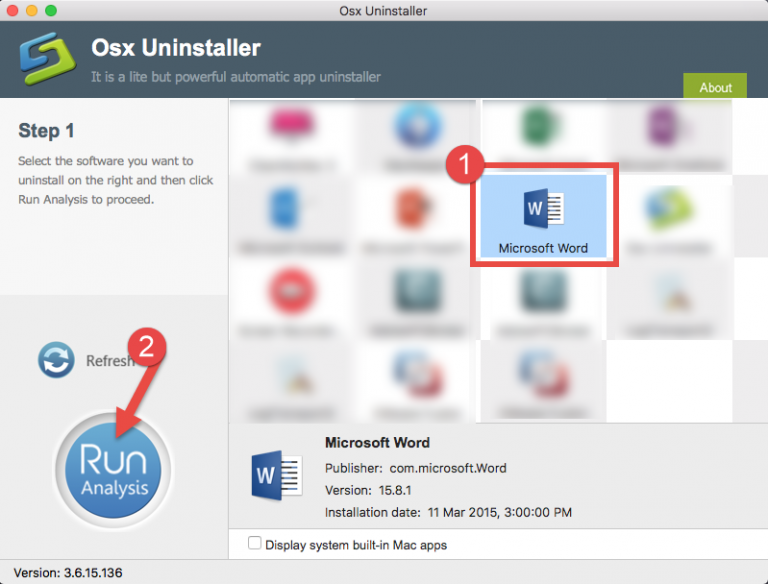
- Click Complete Uninstall, and then Yes to conduct a thorough removal
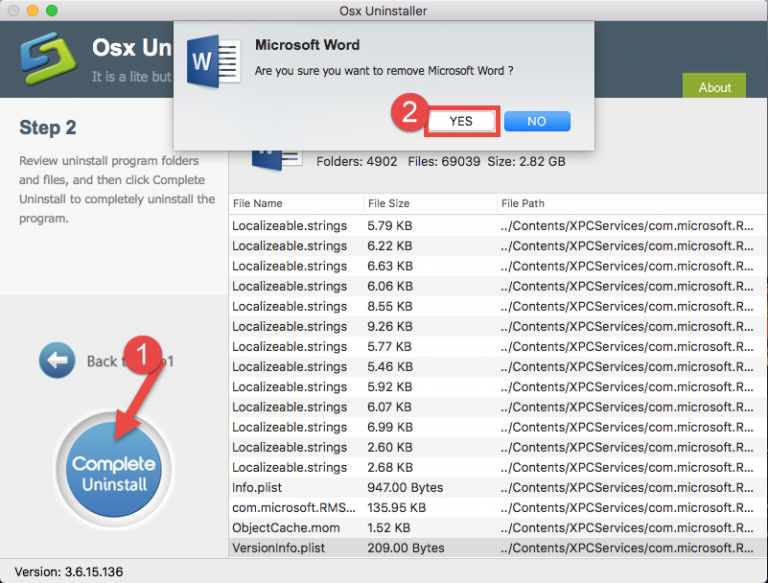
- Click on Back to Interface, and repeat the steps to remove other Office apps
During this process you just need to take a few clicks, and all Office apps can be easily removed from your Mac. Incredibly straightforward, right? Features with streamlined operation, Osx Uninstaller is highly recommended for Mac novices and experienced users. Anytime you run into uninstall issues, don’ hesitate to give it a try.
Option 2: Manually Remove Microsoft Office Apps & Leftovers
Wondering how to properly delete Microsoft Office without using third-party tool? You can first uninstall the apps and then remove the remaining components in the system. Note that you are supposed to sign in as an administrator on your Mac, or you will be prompted to provide the administrator password during the uninstall process.
Step 1. uninstall Microsoft Office apps
Well, here are the regular steps to uninstall third-party apps on macOS/Mac OS X:
- Open the Finder and head to the Applications folder from the Go menu
- Highlight the Office app icon, then drag it and drop it to the Trash
- If prompted, enter your admin account password to allow the deletion
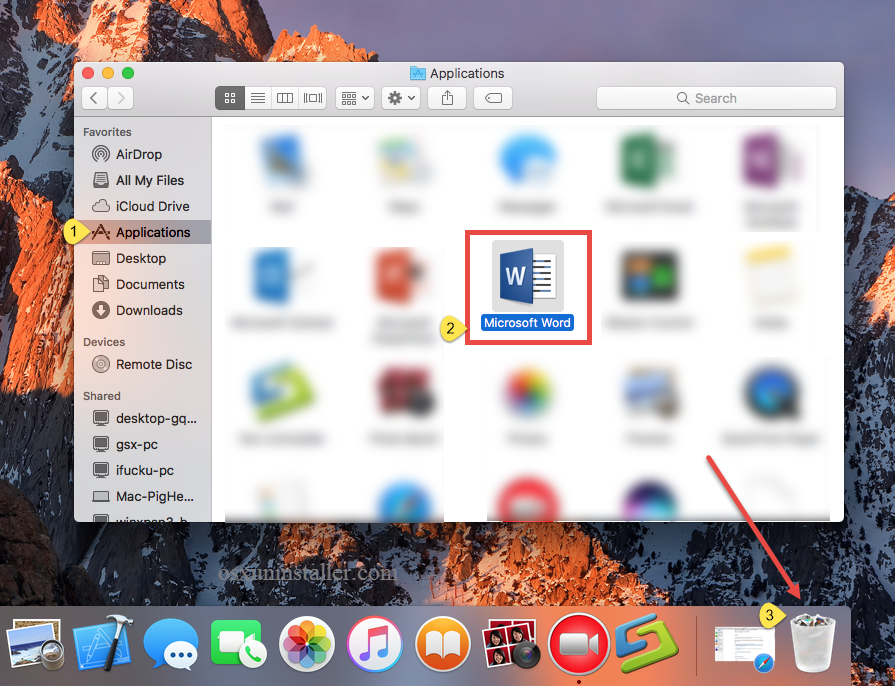
The drag-to-delete method works for almost all apps in all versions of Mac OS X. You can also move the app to Trash by two other options: (1) right click on the app and choose Move to Trash option, or (2) select the app, and go to File > Move to Trash.
Generally the app will be removed instantly from sight and appear in the Trash. You will need to empty the Trash to perform the uninstall (we will talk about it later). If you cannot move the app to the Trash, reboot your Mac and then uninstall it again.
Alternative: There is another uninstall way for the apps that are installed via the App Store. You can uninstall the Mac App Store version through the Launchpad.
- Head to Launchpad, and type the Office app name in the search box
- Click and hold the app that appears, until it begins to wiggle and shows “X”
- Tap the “X” in the left top corner, and then click Delete in the pop-up dialog
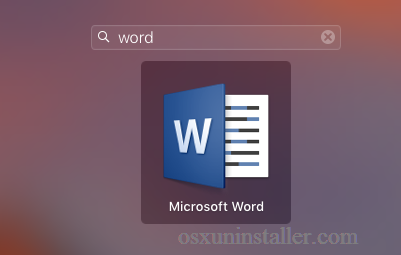
Once you click the X icon, the app will be uninstalled instantly from your Mac. Again, this method works only if you’ve installed Microsoft Office via the Mac App Store.
Step 2. remove leftovers in system
Though Microsoft Office apps have been deleted from Finder and Launchpad, some of the associated files may remains on the User Library inside Home Folder. To carry out complete removal and free up disk space, you can delete those remnants all.
- Open the Finder, click the “Go” from the Menu Bar, and select Go to Folder.
- Enter the following path and hit Enter key to open up this folder: ~/Library

- Type Microsoft (or the app name) in search box, and click the Library below
- Identify the matched items, right click on them all and choose Move to Trash option
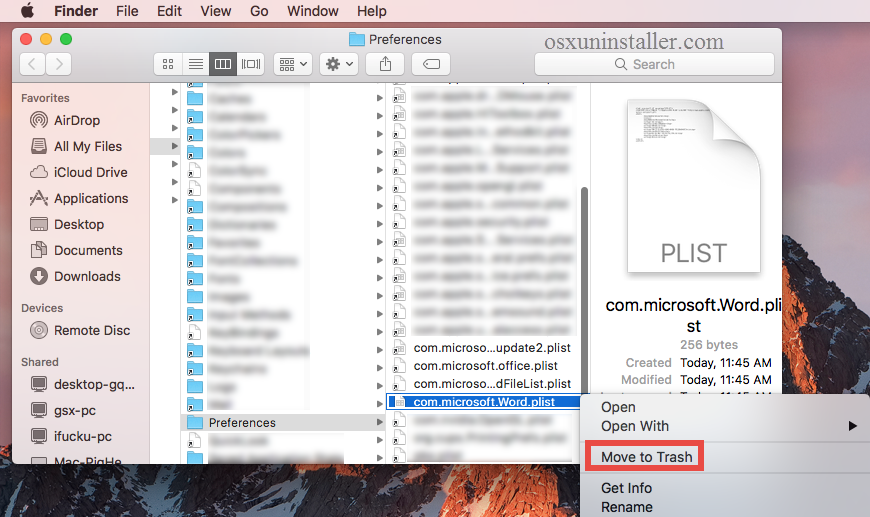
Repeat the steps to detect and delete (if any) component in the Library folder
It should be pointed out that, manually deleting app leftovers in the hidden system folder may involve risk of mistakenly deleting files pertaining to other apps. Besides, you may not be able to detect all app leftovers by only searching for the app name. To avoid trouble and save time, you are recommended to use Osx Uninstaller instead.
Step 3. empty trash (with caution!)
After deleting Microsoft Office apps as well as related files, you can empty the Trash to permanently get rid of the whole suit. Here are the details:
- Right click on the Trash icon in the dock
- Choose Empty Trash and click OK in the pop-up dialog
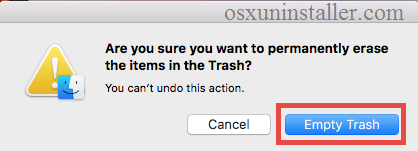
Alternatively, you can empty the Trash by choosing the Empty Trash under the Finder menu. In case you cannot empty the Trash, reboot your Mac and do it again.
Important: the act of emptying the Trash is irrevocable, and everything dropped in the Trash will be deleted from the system immediately. We suggest you to do it cautiously, or wait for a few days to see if everything works well.
If you change your mind about deleting the item, you can right click on the items in the Trash and choose Put Back option, on the condition that Trash is not emptied yet.
So that’s all for the removal guide. Have you successfully uninstalled Microsoft Office yet? Which solution do you prefer to use in this task? Is there any other uninstall issue that troubles you now? Welcome to share your stories with us.


 $29.95/lifetime
$29.95/lifetime